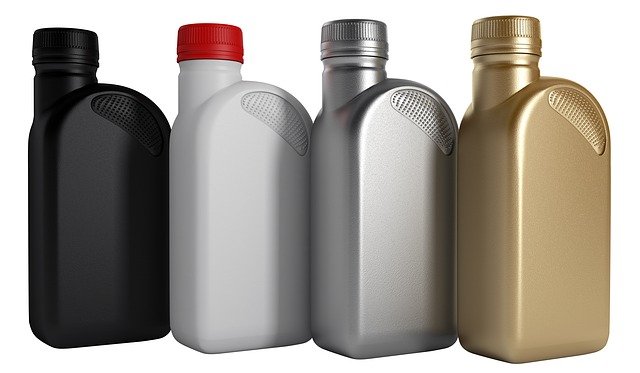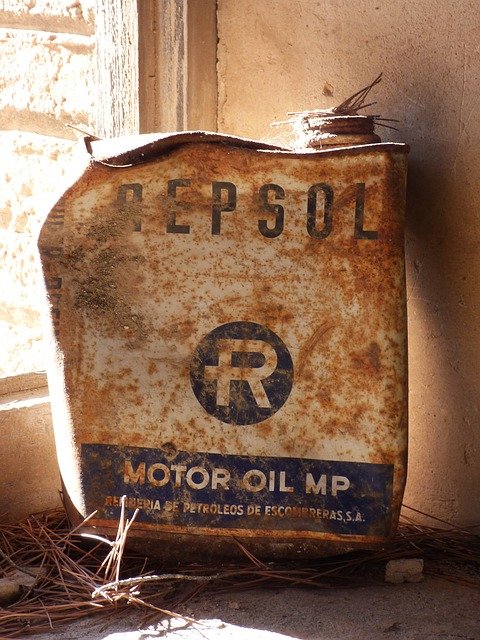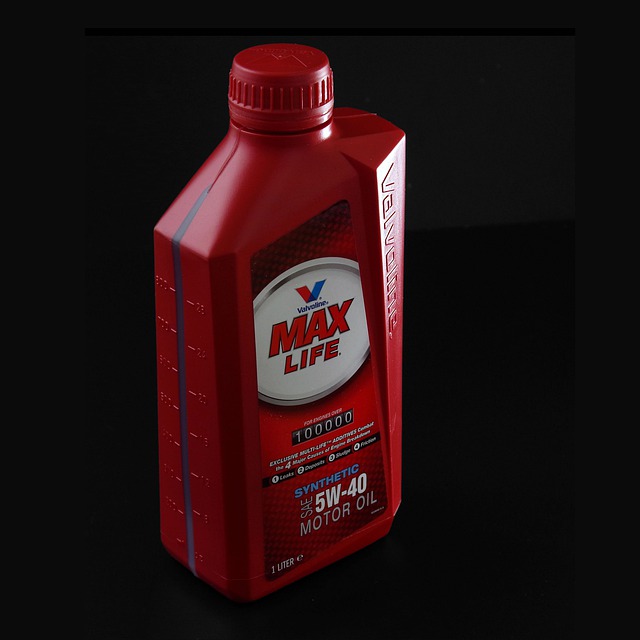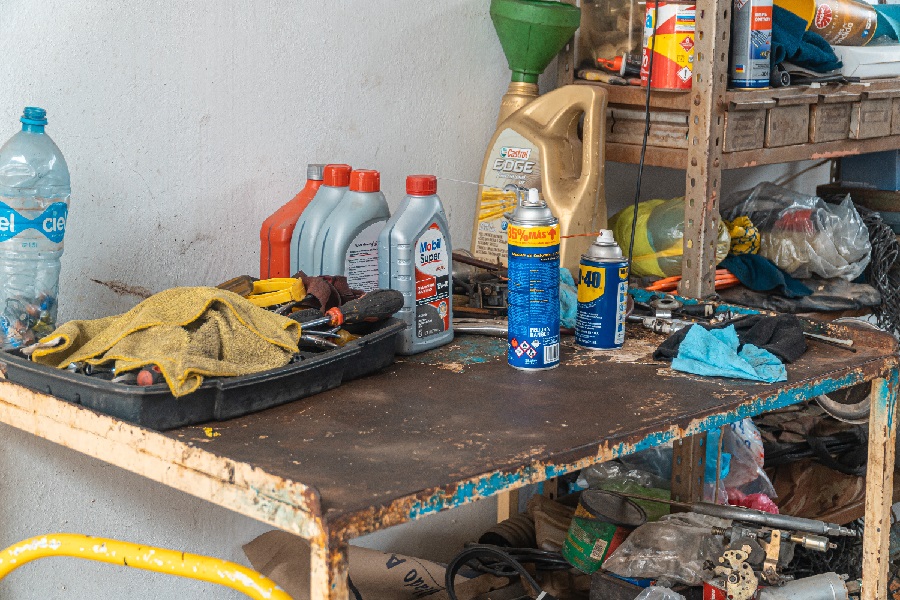The engine in your motorcycle is always running and generating the power required for the smooth functioning of your bike. However, keeping this engine in a healthy condition is a tough task.
Yet, engine oils do this uphill task by continuously lubricating and cooling the engine components. And not just that, it also protects the engine surfaces from corrosion, deposits formation, and wear and tear.
That’s why it is very crucial for motorcycle riders to appreciate the importance of engine oils. A good quality engine oil does wonders to a motorcycle health. And hence, choosing the right oil and changing the oil regularly from you motorcycle is essential for the long run.
#1 WHAT DOES AN ENGINE OIL DO?
Engine Oil is essential for the smooth functioning of a motorcycle. Without an engine oil or the oil at low levels, the engine will not be able to perform and there can be harmful effects on the motorcycle components.
There are 2 main functions of an engine oil in a motorcycle.
- Lubricating the engine components
- Cooling the transmission
Lubricating the engine components
The power generated in the combustion chamber of the engine needs to transmitted to various other components like wheel, alternator, battery etc.
For the power transmission, the engine components engage with one another to carry the mechanical energy. When these components engage for energy transfer, there will be lots of friction between the surfaces.
In order to perform smoothly without much loss of energy to the friction, the transmitting components require proper lubrication.
And, that’s where engine oil helps. The oil forms a slick film layer between the engine parts that are in contact with each other. This film reduces the friction and mitigates the wear for these parts to function smoothly and transmit the power easily.
Cooling the engine components
In the combustion chamber of the engine, the air-fuel mixture is combusted to generate power. This power is what drives the motorcycle. However, along with the power, the combustion also generates lots of heat.
In addition, the mechanical energy transfer involves friction between the transmission components. This friction between the surfaces generate heat as well.
As a result, the components around the engine which are transmitting power have constantly high temperatures.
While the cooling system is the primary mechanism that cools down the engine, the engine oil does its part as well by carrying away the heat from the components.
The continuous flow of oil across the engine components will dissipate the heat along with lubricating them. And that’s why a high heat resistance is recommended in an engine oil. You don’t want the oil to exceed its flash point due to extreme heat.
#2 WHY WE NEED TO CHANGE THE ENGINE OIL?

The engine oil in your motorcycle is not meant to last forever. Over the course of time, the quality of the oil degrades because of its usage.
The continuous heating and then cooling cycles disintegrate the oil molecules over time. The oil also evaporates through the ventilation, when exposed to higher temperatures. In addition, the engines burn the oil some of the times depending on the engine make and conditions.
These circumstances will result in the reduction of both the quality and the quantity of engine oil as you ride more miles. The degradation of quality and low quantity levels of the oil will hamper its performance. This, in turn, hampers the engine performance.
That’s why, it is important for us to change the engine oil regularly.
Effects of Low Oil levels in the Engine
These are the major effects that take place in the motorcycle when the oil levels are low in the engine.
- Engine Overheating: As discussed in the previous section, the engine acts as both lubricant and a coolant to the engine. If there is no sufficient oil to take away the heat generated, the engine will start to overheat. Engine overheating is damaging to the motorcycle.
- Wear and Tear: Since there isn’t enough oil flowing in the system, the lubrication will be insufficient for the engine components. The friction between the engaging surfaces will be severe, resulting in wear and tear of the engine parts.
- Carbon Deposits: Theengine oil along with carrying the heat, also used to clean the surfaces. But, with insufficient oil and the extreme heat, carbon deposits will start to form on the surfaces of the engine components.
Damages Caused Because of Low Oil
These overheating, wear and tear, and the carbon deposits will impact negatively on the performance of the engine. The damages can be long lasting and will eventually affect the motorcycle performance.
Here are some of the major damages caused because of low engine oil levels in the motorcycle.
- Burnt Clutch Plates: Wet clutches need engine oil to operate smoothly. If there is insufficient oil in the system, the excessive friction and the heat generated because of it, will burn the clutch plates.
- Damaged Piston rings: Low oil levels will result in overheating of the engine components. Excessive heating of piston rings will damage them easily.
- Piston wear and damaged Cylinder lining: If there isn’t sufficient lubrication, the dry movement of piston along the walls of cylinder will harm both the piston as well as the cylinder. The cylinder lining can get damaged and the piston will face wear and tear.
- Impaired engine valves: With insufficient oil levels in the engine, the engine valves can get impaired fast. The replacement can be a costly affair as well for the motorcycle owner.
- Other Damages include hard shifting of gears, increased engine and motorcycle vibrations, and decreased mileage of the bike.
#3 THINGS TO KNOW BEFORE CHOOSING ENGINE OIL

Before we jump into the details and nitty-gritty of engine oil, let us first look into some of the basic aspects and terminologies used in the world of engine oils.
Base Stock
Base stock or Base oil are the primary constituent of the engine oil borne from petroleum or chemical processing. Base stock forms the 80% to 90% of the engine oil.
Simply put, if you take the additives from the engine oil, what you get is the base stock. Base stock is the primary form of engine oil.
Viscosity
Viscosity is a measure of resistance to flow. It can also be described as the internal friction of a moving fluid.
Higher the viscosity of the oil, higher is the resistance to its motion due to its molecular breakup providing a lot of internal friction. The oil with high viscosity won’t flow easily. Similarly, low viscosity in the oil means low resistance and the oil will flow easily.
Oil Grades
Oil grades refer to the viscosity levels of an oil. The Society of Automotive Engineers (SAE) has established a numerical code system for grading engine oils based on their viscosity characteristics. The code system helps to compare the viscosity grades of different oils easily.
Additives
Additives are the chemical compounds added to the base stock to improve performance of the engine oil. Additives constitute around 10% to 20% of the engine oil.
Additives include detergents, corrosion inhibitors, antiwear additives, alkalies, friction modifiers, foam inhibitors etc.
Oil Compliance Standards
Oils have quality and compliance standards. One cannot just produce an engine oil and sell them to the market. The oil needs to certified and should adhere to certain quality guidelines.
The two most notable quality standard setting agencies are:
Most engine oils will carry the API label along with letters like SM, SL, SJ, SH, SG etc. Each of these letters represent the complex set of ratings that API provide depending on the tests and the standards the oils have met. Typically, the higher alphabet numbers are higher rated, i.e., SM rating is superior to SE rating.
JASO has created their own quality standards. While the ratings vary for different types of oil, the motorcycle oils will ideally carry JASO-MA label.
#4 TYPES OF ENGINE OIL

There are any different oils out there for us to choose for our motorcycle. Broadly, the motorcycle oils are classified into 3 categories depending on their production methods.
While petroleum oils are the most basic and least expensive oils, synthetic oils provide better performance. While one is created from refining crude oil, the other is chemically reacted to create desire properties.
The 3 types of motorcycle engine oils are:
- Mineral Oil
- Synthetic Oil
- Semi-Synthetic Oil
Mineral Oil
Mineral oils are sourced from petroleum processing by refining crude oil. From the base stock, several additives are added to the mineral oil to improve viscosity and lubrication.
Th main advantages of Mineral Oil are its affordable pricing even with frequent changes and the protection it provides to the engine components. The disadvantages of mineral oil are – the oil won’t last very long and hence, requires frequent oil change.
Mineral Oils are best suited for new motorcycles and motorcycles with smaller capacity engines.
Synthetic Oil
Fully synthetic oils are processed out of pure polymers. These polymers are usually sourced from factory made oils. Fully synthetic oils are considered the best quality oils out there as they won’t break down easily as against the mineral or semi-synthetic oils.
The main advantage of synthetic oils is their high quality and the lubrication. They provide the best lubrication performance out of all the oils available. However, synthetic oils are not cheap. They are expensively priced when compared to the other oils.
Synthetic Oils are best suited for high performance motorcycles like superbikes and racing motorcycles.
Semi-Synthetic Oil
While mineral oils are of low quality but economical, and the synthetic oils are of high quality but expensive, semi-synthetic oils provide the middle path between the other two.
Semi-synthetic oils are produced as a mixture of mineral oil and synthetic oil. It uses both the natural oils from petroleum as well as the chemically reacted polymers.
The pros of semi-synthetic oil is that it provides both good performance and good protection. The quality of the oil is reasonable with satisfactory lubrication characteristics.
However, the downside is that semi-synthetic oils excels nowhere. The middling quality – both performance wise and protection wise is between either of the two other oil types.
Motorcycles with medium capacity engines are better off with semi-synthetic oils since these bikes aspire for good lubrication and protection at a reasonably priced oil.
Here is a comparison table for all the three types of oils.
| Parameters | Mineral Oil | Semi-Synthetic Oil | Synthetic Oil |
|---|---|---|---|
| Source | petroleum processing | sourced from both petroleum & chemicals | processed from polymers and chemicals |
| Pros | high protection; affordable pricing | good performance; good protection | high quality; best lubricating performance |
| Cons | won’t last long | middling quality | expensive pricing |
| Best suited for | new motorcycles; low cc engines | medium capacity engines | super bikes; high performance bikes |
#5 ENGINE OIL GRADES

Different engine oil grades simply refer to different viscosity levels.
And viscosity, as discussed earlier, is a measure of resistance to flow. It can be described as the internal friction of a moving fluid.
Higher the viscosity, the oil has higher resistance to its motion because of its molecular breakup providing a lot of internal friction. The oil with high viscosity won’t flow easily.
Similarly, for oils with low viscosity, the resistance to the motion is low dues to its molecular breakup not putting up a lot f internal friction. The oil will flow easily when there is low viscosity.
Does that mean Low Viscosity is Better?
Not necessarily.
The function of the oil is to both lubricate and cool down the engine components.
If the oil has too low viscosity, it will flow too fast. In such speed motion, the heat from the engine parts won’t be absorbed and carried properly.
Similarly, if the oil has too high viscosity, the oil movement will be too slow, which is again not desirable at all.
So, the optimum viscosity level depends on the make of the engine, the motorcycle condition, the climatic conditions of the locality, the maintenance of the engine parts etc. If higher free flow is desired, then you need to go for lower viscosity, and if the heat is not absorbed and cooled properly you need to increase the viscosity.
As a thumb rule, low viscosity is preferred in lower temperatures and high viscosity at high temperature localities.
At low temperatures, a low viscosity oil facilitates faster circulation in the vehicle desirable during a cold start. At high temperatures, high viscosity grade is preferred in the oil to for its resistance in the hot areas of the engine.
Viscosity Ratings
Viscosity notation on engine oils is commonly denoted as “XW-XX”.
The Society of Automotive Engineers (SAE) has established this numerical code system for grading engine oils based on their viscosity characteristics.
There are 2 sets of viscosity measurements for the oils.
- Viscosity measurement for cold temperatures (0W, 5W…)
- Viscosity measurement for high temperatures (20, 30 …)
The viscosity is graded by measuring the time it takes for the oil to flow through a calibrated orifice at standard temperatures. The longer it takes higher the viscosity and higher the grade.
What does an XW-XX rating mean?
There are 2 parts to the notation here.
The first part, “XW” refers to the viscosity grade for cold temperatures. The “W” here stands for Winter, referring to the cold temperatures at which viscosity performance is measured. The standard notation examples for the oil here are 0W, 5W, 15W, 20W and 25W.
The second part, “XX”, denoted after “W”, refers to the viscosity grade at high temperatures (usually measured at 100 degree Celsius). The notation examples are 8, 12, 16, 20, 30, 40, 50 and 60.
So, a 5W-30 oil has a weight of 5 during cold start, and a weight of 30 at high temperatures.
Also, a higher grade means higher viscosity. A 5W-30 engine oil will have a lower viscosity and better flow when compared to a 10W-40 oil.
Extending the above point, a 0W-30 oil will have higher flow at cold start than a 5W-30 oil. But both oils will behave same at normal temperatures.
Similarly, a 5W-30 oil and a 5W-40 oil will have same characteristics during a cold start. However, the 5W-40 is more viscous at high temperatures than the 5W-30 oil.
Single Grade Oils
Now, not all oils perform both at cold as well as hot temperatures. Some oils function only in cold climates and some only in normal and hot climates.
These motorcycle oils will have a smaller operating temperature range. The oils are generally designed for older motorcycle engines. Due to their low temperature range functioning, single grade oils are divided into two categories.
- Winter grade oils – SAE 0W, 5W, 15W, 20W and 25W engine oils.
- Non-Winter grade oils – SAE 8, 12, 16, 20, 30, 40, 50 and 60 engine oils.
Single grade oils are either suitable for cold temperatures (winter grade oils) or for hot temperatures (non-winter grade oils).
There is no overlap here, and the winter grade oils cannot be used for summer and similarly, non-winter grade oils cannot be used at cold temperatures.
Multi-Grade Oils
Multi-Grade Oils, on the other hand, have large temperature range and can work both at cold and hot temperatures.
Needless to say, multi-grade oils are the popular ones due to their utility across all the seasons. Most modern motorcycles use multi-grade oils for their engines now.
The viscosity grading of multi-grade oils will have two notations – one for the cold temperatures and the other one for normal or high temperatures. You will see the grades of multi-grade oils as 5W-30, 10W-30, 20W-40 etc.
In a 5W-30 multi-grade oil, “5W” refers to the viscosity grade at cold temperatures and “30” refers to the viscosity grade at normal and high temperatures.
The oil will behave as a single grade SAE 5W oil during cold temperatures and will behave as a single grade SAE 30 at normal and high temperatures.
#6 ADDITIVES
Additives are the chemical compounds added to the base stock to improve performance of the engine oil. Additives constitute around 10% to 20% of the engine oil.
Some of the typical additives introduced to the oil are:
Detergents
Detergents or Dispersants are used to clean and neutralize the impurities in the oil which normally would have caused deposits or sludge on the engine components.
Detergents ensure that these impurities and foreign objects stay in suspension to allow the filtration system to remove these impurities.
Corrosion Inhibitors
Corrosion or rust inhibiting additives prevent the oxidation of the metal surface inside the engine. These additives safeguard the deterioration of metal surfaces from free radicals and oxidising agents.
Anti-wear additives
These additives form a thin layer on the metal surfaces to prevent metal to metal wear. However, anti-wear additives also increases the ash content in the oils. As a result, modern anti-wear additives which contain low ash content are not effective as the old ones.
Alkaline additives
Alkaline additives are used to neutralize the acids produced in the engine during combustion. They also prevent the formation of sulfates in the engine oil.
Alkaline additives contain strong bases like potassium hydroxide to act as acid neutralizers.
Other additives
Other additives such as friction or viscosity modifiers, foam inhibitors, metal deactivators are used to enhance the performance of the engine oil along with providing protection to the engine components.
#7 WHICH OIL TO CHOOSE

Now that we understand the various aspects of a motorcycle engine oil, the dilemma still remains which oil to choose.
Well, the straight forward answer is to choose the oil recommended by your motorcycle manufacturer in the user manual.
This is specifically applicable for the oil grade. If the recommended grade is 10W30 oil, it doesn’t make sense to use any other oil grades like, say 10W40. The manufacturer is the best person who knows the engine in and out.
Now for the type of oil to use, it depends on the condition of the motorcycle, type of engine, and your preference and budget.
If your motorcycle is new or has lower cc engine, you can go for a mineral oil. If, on the other hand, you have a super bike or you want an improved performance, you can choose a synthetic oil. Or, if you want to balance between the performance and budget, semi-synthetic oils are preferable.
#8 HOW FREQUENTLY SHOULD YOU CHANGE THE OIL
The frequency of oil change depends on the make of the motorcycle, the type of oil you use, how old the motorcycle is, what condition the motorcycle and engine is in, how you use your motorcycle – for short rides, long rides etc.
As a general rule of thumb, here are the recommended frequency of oil change for the distance travelled based on the type of oil you are using.
| Type of Oil | Frequency for Oil Change |
|---|---|
| Mineral Oil | 2000 miles |
| Semi-Synthetic Oil | 5000 miles |
| Synthetic Oil | 8000 miles |
However, if you ride the motorcycle for long distances frequently, you may have to change the engine oil much more frequently. You want to ensure the quality of oil remains top notch for the smooth functioning of oil in the motorcycle.
Symptoms of Low Engine Oil
Few of the modern motorcycles have sensors attached in them which directly indicate the oil level in the engine. Or some motorcycles have temperature gauges attached to indicate the temperature of the engine. This can be used as an indirect identifier for low engine oil levels.
Apart from the sensors, the low oil levels can be identified based on other symptoms that motorcycles show.
There usually is a large noise or increased vibrations coming fro the engine whenever the oil levels are low. You can even hear metal-to-metal clinking noise coming from the engine when there is insufficient oil.
Overheated engine and hence, the increased temperatures are another symptom for low engine oil levels.
Another symptom but a drastic one is engine seizure. If your bike engine has seized, insufficient engine oil in the system is the likely reason.
The best method to check for the engine oil level in a motorcycle is to use a dipstick. You can clearly see the level of oil by the wet layer on the dipstick. If there is nothing to see, then the motorcycle engine has run out of oil.
How Far can your Motorcycle go with Low Engine Oil?
Not much.
You will be lucky if the motorcycle stops running right after the engine has run out of oil.
If, on the other hand, it runs for 50 miles, you are going to have a headache due to the damaged engine parts. There will be permanent and premature wear on these components. And some of them can prove costly to you.
So, how far will the motorcycle go with low engine oil levels? Probably not too far. But it depends on the motorcycle and what condition it is in. On an average, you can travel around 40 miles to 50 miles with low engine oil.
However, keep in mind that running on such low oil levels is actually harmful to your bike which will come back to haunt you in the long run.
#9 CAN CAR OIL BE USED FOR MOTORCYCLES?

Motorcycle Oils and Car Oils do not work the same way. Both these oils are not interchangeable. You should not use a car oil in your motorcycle.
The characteristics of a car oil and a motorcycle oil are vastly different.
A motorcycle oil is used for lubrication and cooling with low ash content and high viscosity. A balanced friction characteristic is desired in the motorcycle oil for the smooth functioning of the wet clutch.
A car oil, on the other hand, is not necessarily used as a coolant but for lubrication and fiction modifier. The oil has high ash content and low viscosity. Low friction is desired in the car coil to provide maximum fuel efficiency.
Since both these oils have different characteristics and usages it is not appropriate or desirable for the motorcycle to use car oil or vice versa.
What happens if Car Oil is Used in a Motorcycle?
If at all a car oil is used in the motorcycle, there will be two major negative impacts.
First, motorcycles require a healthy amount of viscosity and friction characteristics in the oil. Car oils, however, have low viscosity and the additives in them reduces friction. As a result, the wet clutch in the motorcycles which require enough friction, will not function properly and will be slippery.
Second, car oils contain detergent additives which has high ash content in them. If used in a motorcycle, the ash content and additives will start accumulating and form deposits on the piston crowns and engine valve train. These deposits will damage the engine components in the long run.
What happens if Motorcycle Oil is Used in a Car?
What about the other case? A motorcycle oil is used in a car.
As discussed earlier, these oils are not interchangeable. Motorcycle oils should not be used in a car either.
If at all used, the consequences can range from reduced mileage to damaged transmission.
Motorcycle oils have higher viscosity and friction characteristics. Car components do not need such high viscosity and as a result the energy transmission gets affected. The fuel efficiency will decrease, thereby hampering the fuel economy.
Additionally, the transmission performance will start getting affected with even some of the transmission components getting damaged.
#10 HOW TO CHANGE THE OIL – STEP BY STEP GUIDE

If you usually prefer to go to the mechanic or service centre for oil change, you can skip this section. However, if you are DIY person, here is the step-by-step guide on how to change the engine oil in your motorcycle.
Prerequisites
First, you need to have certain items with you in hand while changing the oil in your bike. Here are the items list for you.
- New Engine Oil (duh!)
- Drain Tray
- Funnel
- Socket wrench
- Torque wrench
- New Oil filter, if applicable
- Gloves and rags
Steps to follow
Once you have all the above items ready, follow these steps to change the oil.
Step 1: Start by running the engine for a minute or two to warm up. You can either go for a short ride or you can shift the gear to neutral and use the throttle to rev up. A warm oil is always easy to drain when compared to a cold one.
Step 2: Wait for a minute or two after stopping the engine. Then slowly unscrew the oil filler cap and set it aside.
Step 3: Now, place a drain tray underneath the drain plug. You should never top the engine oil. A mix of old and new oil is not a good combination. Furthermore, the deposits and the slugs formed will still remain in the bike. So, remove the drain plug using a socket wrench and drain the old engine oil.
Step 4: Once the oil has started draining, start removing the oil filter. Use a wrench to unscrew and then use your hand to turn counter clockwise and remove the filter.
Step 5: The oil should have drained completely by now. Look at the condition of the oil filter. Decide on whether to clean it and reuse or to use a completely new one depending on the condition of the old oil filter.

Step 6: Once decided, carefully fit the oil filter back into its place. Make sure you don’t over-tighten the screw.
Step 7: Clean the drain bolt with some fresh oil and refit it back.
Step 8: Its time to refill the engine with the new oil. Use a funnel to place into the fill hole and start pouring the oil. Do not fill up to the maximum level. Allow some gap and fill it just below the maximum.
Step 9: Place back the filler cap and clean up the dirt or oil splashes in your motorcycle with a rag or towel.
